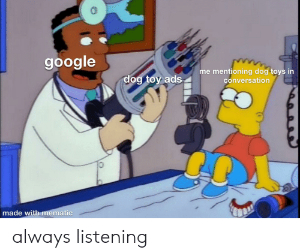3 Things to focus your Content on in 2022

The end of the year always provides such a good time to reflect on trends and the direction we’re going! After a year with so many transitions across industries, privacy laws, and marketing channels, our focuses for next year have also shifted! One area to focus on in 2022 is content marketing.
If these last few years have taught us anything, it’s that content-based marketing really is one of the most important pieces of marketing. Your approach to content informs many aspects of business, not just marketing. Content covers all the ways you communicate. It’s tied to branding and mission and purpose and your focus. The type of content you produce helps you make decisions about marketing channels and our audience.
Content Trends 2022
With the rise of content marketing, ecommerce, and digital advertising, everyone acknowledges that social media, blogs, email marketing, etc. are all effective ways to sell people. The problem is that the very nature of content marketing erases the lines between education, entertainment, and sales. We have become so inundated with ads that our brains have been conditioned to go on the defensive when we feel like we are being sold.
An often-quoted marketing research study from 2007 found that the average American saw 5,000 advertisements a day. 5,000 ads a day pre-digital billboards, pre-Farmville, pre-Instagram, and pre-iPhone. Current estimates put the average number ads seen every day closer to 10,000. The 2007 study warned that number of ads cluttering our life would push for innovation in advertising that would in turn, create more clutter.
What can we do to cut through the clutter in 2022? Content marketing is an effective way because if done well, isn’t actually an ad and will actually reach the consumer.
Here’s three trends/focuses to incorporate into your 2022 content marketing.
Storytelling
This ties into the old writing rule: show don’t tell. Telling a customer how great you are won’t make them believe you. Showing them will prove it to them. But weaving a story around your product, brand, and successes will build an emotional connection between you and your customers.
Education
This goes hand in hand with storytelling and the inundation of advertising we all deal with. We have an excessive number of options to choose from. As well as our personal connection with brands, we use things like Social Proof to help us decide what products to buy. Brands can use this to their advantage by educating customers about their product instead of selling their product. The focus on pure information takes the pressure off the consumer to purchase. In turn, an educated customer is more likely to purchase.
Personalization
Even with increased privacy and data laws, there is more access to information about customers than ever. We often talk about personalized advertising in connection with retargeting and audience segmentation. It’s easy with personalization to focus on how specific and personalized you can get your advertising. ‘If someone clicks this and this and lives in these areas then we know all of this about them and can serve an ad for this specific product.’ That type of thinking is very valuable and helps you communicate effectively with your customers.
But personalized advertising doesn’t need to be that minute; it can be as simple as thinking about what channel you are using. Are you making blog content? What type of person reads blogs? You could build out a detailed buyer persona based on analytics and write with them in mind. That is very personalized! Or you could use common sense to tell you that most people who read blogs are probably interested in educating themselves, which also gives you a lot of information to personalize. The personalization can just be the focus of the channel. ‘These consumers are here to be educated, so we are going to educate them.’
Spotlighted Marketing Channel: CTV
Many marketers are using CTV (connected TV) or OTT (over-the-top) channels to target consumers using streaming services and connected TV devices such as Hulu and Roku. Advertisers are embracing these platforms as more and more ad space becomes available. Spending for CTV advertising grew from $6.94 billion in 2019 to $8.88 billion in 2020, a 28% increase.
Advertiser spent an estimated $8.88 billion on CTV in 2020
Read more about the future of CTV here!
What things are you excited to focus on in 2022?
How To Make Personalized Ads Less Creepy

We all have heard the jokes about how our phones are listening. Our phones, and tablets, and watches, and computers, and smart speakers. Therefore, when we get super personalized ads it can feel a bit creepy. Like, how do they know my name? and I was literally just talking about this? So, how can we find the balance between personalized marketing and creepy personalization?
Why do we need personalized marketing in the first place?
In order to stand out in this digital world, brands need to communicate with their customers in a way that shows that the brand cares about the same things their customers do. This is especially true in social media. Social media can feel like customers have 1-on-1 relationships with the brand they follow. They can build relationships that feel personal.
Here’s a few ways to make personalized marketing effective and not jarring:
- Start with the information you have about your customers. It’s difficult to know what your customers want if you don’t know who they are. Look at your 1st party data. What are your most common demographics? What are their interests? How would they most like to be communicated with?
- Use the tools available. Marketing automation platforms and CRMs can do a lot of the heavy lifting when it comes to segmenting data. Many of them are designed to help create simple, personalized messages.

- Have a well thought out plan. Do you have a mapped-out customer journey? Knowing where in their journey your customers are makes a big difference in the types of personalization that will work for them. Think about nurturing. Pay attention to the details. Make sure that the little things that can be annoying such as, getting an abandoned cart email even though you’ve already come back to purchase it, are gone.Get rid of triggers that are connected to repurchasing products commonly only purchased once. (looking at you, toilet seat.)
- Know when to walk away. Keep your data clean. If someone has never opened an email it might be a good idea to take them off your list. Their data could skew your demographics and could make understanding what personalization your active customers need difficult.

What’s the creepiest personalized advertising you’ve ever seen?
